-
 Bitcoin
Bitcoin $96,681.8857
-0.36% -
 Ethereum
Ethereum $1,834.6107
-0.74% -
 Tether USDt
Tether USDt $1.0003
0.01% -
 XRP
XRP $2.2187
-0.24% -
 BNB
BNB $600.1228
-0.45% -
 Solana
Solana $148.9273
-1.27% -
 USDC
USDC $0.9999
0.00% -
 Dogecoin
Dogecoin $0.1816
-1.03% -
 Cardano
Cardano $0.6981
-2.26% -
 TRON
TRON $0.2489
1.77% -
 Sui
Sui $3.4083
-3.32% -
 Chainlink
Chainlink $14.5538
-2.49% -
 Avalanche
Avalanche $21.1537
-3.74% -
 Stellar
Stellar $0.2744
-0.91% -
 UNUS SED LEO
UNUS SED LEO $8.9292
-0.17% -
 Toncoin
Toncoin $3.1704
-2.21% -
 Shiba Inu
Shiba Inu $0.0...01337
-1.72% -
 Hedera
Hedera $0.1852
-1.39% -
 Bitcoin Cash
Bitcoin Cash $369.4893
-0.07% -
 Hyperliquid
Hyperliquid $20.6769
1.72% -
 Litecoin
Litecoin $87.6331
-2.54% -
 Polkadot
Polkadot $4.1296
-2.53% -
 Dai
Dai $0.9999
0.02% -
 Bitget Token
Bitget Token $4.4533
1.26% -
 Monero
Monero $277.5329
1.93% -
 Ethena USDe
Ethena USDe $1.0008
0.03% -
 Pi
Pi $0.5934
-1.12% -
 Pepe
Pepe $0.0...08582
-3.12% -
 Aptos
Aptos $5.4079
-2.58% -
 Uniswap
Uniswap $5.2085
-2.67%
How to get a digital currency wallet
Hardware wallets provide the highest level of security by storing private keys offline, protecting cryptocurrencies from online threats and unauthorized access.
Jan 11, 2025 at 04:12 pm

Key Points
- Understanding Digital Currency Wallets
- Choosing the Right Wallet Type
- Creating a Hardware Wallet
- Setting Up a Software Wallet
- Using an Online Wallet
How to Get a Digital Currency Wallet
Understanding Digital Currency Wallets
Digital currency wallets are applications or devices that store private keys and public addresses to manage and protect cryptocurrencies. They provide a secure way to send, receive, and store digital assets. Wallets come in various types, each offering unique features and levels of security.
Choosing the Right Wallet Type
Selecting the appropriate wallet depends on individual needs and security requirements. Here are the main types:
- Hardware Wallets: Physical devices that store private keys offline, providing the highest level of security. Examples include Ledger and Trezor.
- Software Wallets: Desktop or mobile applications that store private keys on a connected device, offering convenience and accessibility. Examples include Exodus and MetaMask.
- Online Wallets: Web-based platforms that store private keys online, allowing for easy access but potentially lower security. Examples include Coinbase and Binance.
Creating a Hardware Wallet
- Set up Pin: Power on the hardware wallet and set up a unique PIN for protection.
- Create Seed Phrase: The wallet will generate a seed phrase, a sequence of 12-24 random words. Write down this phrase in a secure location and keep it secret.
- Confirm Wallet: Verify the seed phrase by re-entering it to activate the wallet.
- Install Public Address: Connect the hardware wallet to a compatible software wallet or exchange to install your public address, which allows you to receive funds.
Setting Up a Software Wallet
- Download Wallet: Select and download a reputable software wallet from an official source.
- Create Account: Register a new account with the wallet, typically involving providing an email address and password.
- Back up Private Key: The wallet will generate a private key. Save and store this key securely, as it grants access to your funds.
- Set Up Security: Consider enabling two-factor authentication and choosing a strong password to enhance security.
- Add Asset: To receive specific cryptocurrencies, add the corresponding asset to the wallet by providing the public address or using the wallet's built-in functionality.
Using an Online Wallet
- Create Account: Sign up for a secure online wallet by providing personal information and verifying your identity.
- Store Keys: The online wallet will generate and store your private keys on their servers.
- Access Funds: Log in to the wallet to access your digital assets, send and receive funds, or trade cryptocurrencies.
- Beware of Security: Manage your passwords wisely and be aware of potential phishing scams or security breaches that may compromise your funds.
FAQs
Q: Which is the best type of digital currency wallet?
A: The best wallet type depends on individual requirements. Hardware wallets provide the highest security, while software wallets offer convenience and accessibility. Online wallets are generally less secure but may be suitable for low-risk storage or frequent trading.
Q: How do I ensure the security of my digital currency wallet?
A: Store your private keys securely, use strong passwords, and enable two-factor authentication. Be aware of phishing scams and only download wallets from official sources. Regularly check for security updates and consider using multiple wallets to distribute assets.
Q: How do I access my digital currency wallet if my device is lost or damaged?
A: If you have a hardware wallet, recover your funds using the seed phrase. For software and online wallets, check if they offer recovery options, such as seed phrases or account recovery methods. It's crucial to store backups of your private keys and password separately.
Q: What are the benefits of using a digital currency wallet?
A: Digital currency wallets offer numerous benefits, including:
- Secure storage and management of cryptocurrencies
- Easy transfer and receipt of funds
- Integration with exchanges and decentralized applications (dApps)
- Access to advanced features like staking and earning rewards
Disclaimer:info@kdj.com
The information provided is not trading advice. kdj.com does not assume any responsibility for any investments made based on the information provided in this article. Cryptocurrencies are highly volatile and it is highly recommended that you invest with caution after thorough research!
If you believe that the content used on this website infringes your copyright, please contact us immediately (info@kdj.com) and we will delete it promptly.
- ZachXBT Announces He and Collaborators Have Frozen Some of the Bitcoin Stolen in a Recent $330M Theft
- 2025-05-03 11:15:13
- title: Discussions around the DOGE stimulus checks are growing, but official payments remain unapproved
- 2025-05-03 11:15:13
- Binance Security Team Helps Freeze Roughly $7M of the $330M in Bitcoin Stolen from a US Crypto Holder
- 2025-05-03 11:10:12
- President Trump's venture into crypto products has increased his family's wealth by billions
- 2025-05-03 11:10:12
- Strategy, Previously Known as MicroStrategy, Earned a $5.8 Billion Profit on Its Bitcoin Investments in the First Quarter of 2025
- 2025-05-03 11:05:12
- Dogecoin Cloud Mining Explained
- 2025-05-03 11:05:12
Related knowledge
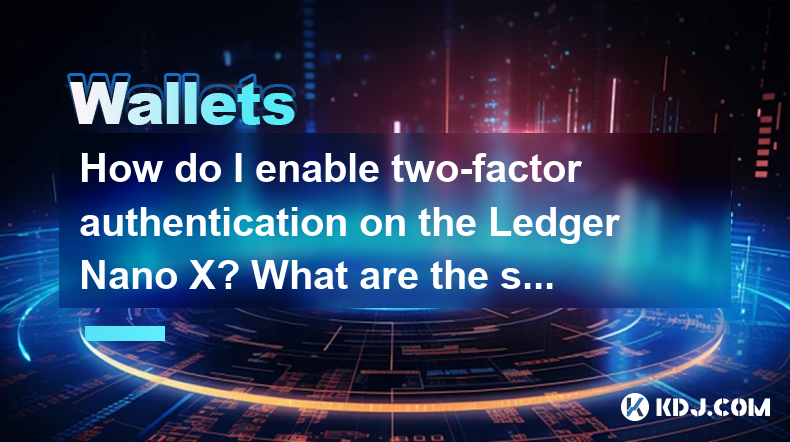
How do I enable two-factor authentication on the Ledger Nano X? What are the security options?
May 02,2025 at 09:49pm
Enabling two-factor authentication (2FA) on your Ledger Nano X is a critical step in securing your cryptocurrency assets. The Ledger Nano X offers robust security options that enhance the protection of your digital wealth. In this article, we will guide you through the process of enabling 2FA on your Ledger Nano X and explore the various security featur...
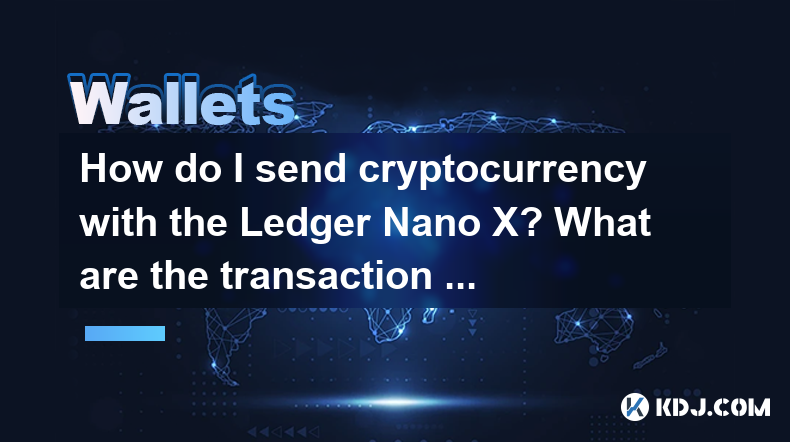
How do I send cryptocurrency with the Ledger Nano X? What are the transaction confirmation steps?
May 03,2025 at 05:01am
Sending cryptocurrency using the Ledger Nano X involves a series of steps that ensure the security and accuracy of your transactions. This process is designed to be user-friendly while maintaining the high level of security that Ledger devices are known for. In this article, we will guide you through the process of sending cryptocurrency with the Ledger...
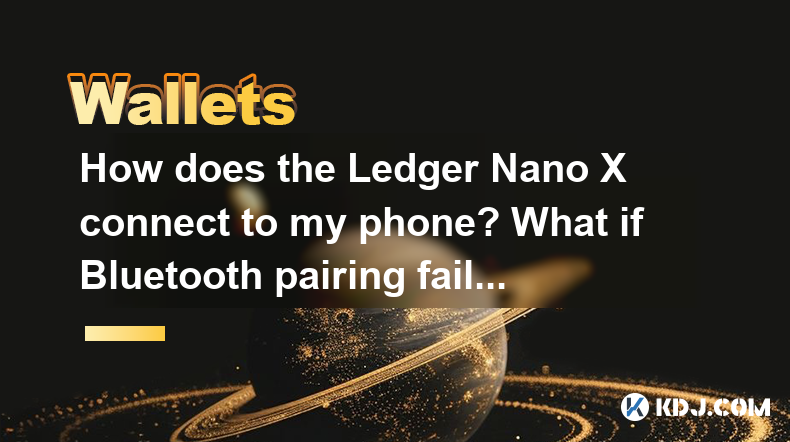
How does the Ledger Nano X connect to my phone? What if Bluetooth pairing fails?
May 02,2025 at 07:07pm
The Ledger Nano X is a popular hardware wallet designed to securely store your cryptocurrency. One of its key features is the ability to connect to your smartphone via Bluetooth, allowing for a seamless and convenient user experience. In this article, we will explore how to connect your Ledger Nano X to your phone and what to do if Bluetooth pairing fai...

How do I update the Ledger Nano X firmware? What if the update fails?
May 02,2025 at 06:00am
Updating the firmware of your Ledger Nano X is an essential process to ensure that your device remains secure and fully functional. The Ledger Nano X is a popular hardware wallet used for storing various cryptocurrencies safely. In this article, we will guide you through the step-by-step process of updating the firmware, and we will also address what to...
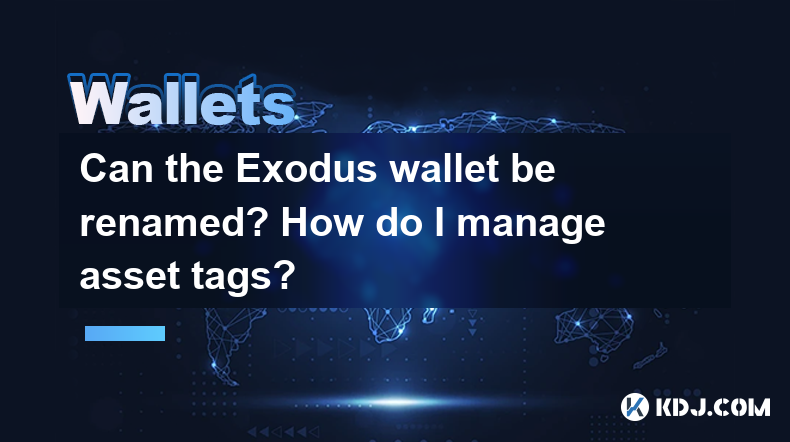
Can the Exodus wallet be renamed? How do I manage asset tags?
May 02,2025 at 11:49pm
Can the Exodus Wallet Be Renamed?Exodus wallet, a popular choice among cryptocurrency enthusiasts, offers a user-friendly interface and robust security features. One of the frequently asked questions by its users is whether the wallet can be renamed. The answer is yes, you can rename your Exodus wallet. This feature allows users to personalize their wal...
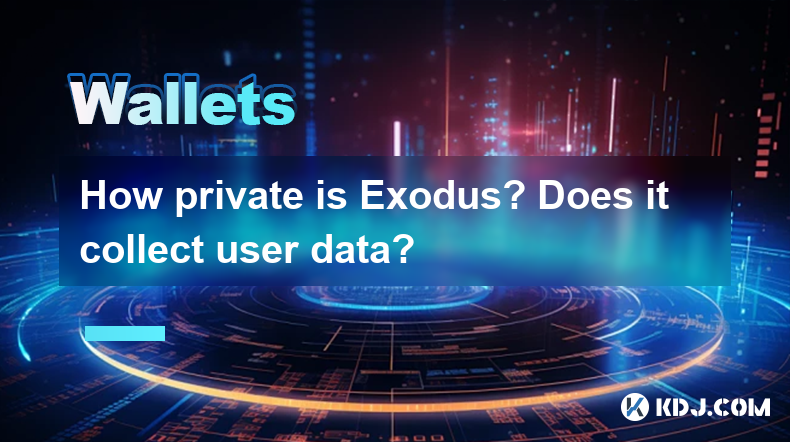
How private is Exodus? Does it collect user data?
May 03,2025 at 01:49am
How Private is Exodus? Does it Collect User Data? Exodus is a popular cryptocurrency wallet that prides itself on its user-friendly interface and robust features. However, when it comes to privacy and data collection, many users are curious about how private Exodus really is and whether it collects user data. In this article, we will delve into the priv...

How do I enable two-factor authentication on the Ledger Nano X? What are the security options?
May 02,2025 at 09:49pm
Enabling two-factor authentication (2FA) on your Ledger Nano X is a critical step in securing your cryptocurrency assets. The Ledger Nano X offers robust security options that enhance the protection of your digital wealth. In this article, we will guide you through the process of enabling 2FA on your Ledger Nano X and explore the various security featur...

How do I send cryptocurrency with the Ledger Nano X? What are the transaction confirmation steps?
May 03,2025 at 05:01am
Sending cryptocurrency using the Ledger Nano X involves a series of steps that ensure the security and accuracy of your transactions. This process is designed to be user-friendly while maintaining the high level of security that Ledger devices are known for. In this article, we will guide you through the process of sending cryptocurrency with the Ledger...

How does the Ledger Nano X connect to my phone? What if Bluetooth pairing fails?
May 02,2025 at 07:07pm
The Ledger Nano X is a popular hardware wallet designed to securely store your cryptocurrency. One of its key features is the ability to connect to your smartphone via Bluetooth, allowing for a seamless and convenient user experience. In this article, we will explore how to connect your Ledger Nano X to your phone and what to do if Bluetooth pairing fai...

How do I update the Ledger Nano X firmware? What if the update fails?
May 02,2025 at 06:00am
Updating the firmware of your Ledger Nano X is an essential process to ensure that your device remains secure and fully functional. The Ledger Nano X is a popular hardware wallet used for storing various cryptocurrencies safely. In this article, we will guide you through the step-by-step process of updating the firmware, and we will also address what to...

Can the Exodus wallet be renamed? How do I manage asset tags?
May 02,2025 at 11:49pm
Can the Exodus Wallet Be Renamed?Exodus wallet, a popular choice among cryptocurrency enthusiasts, offers a user-friendly interface and robust security features. One of the frequently asked questions by its users is whether the wallet can be renamed. The answer is yes, you can rename your Exodus wallet. This feature allows users to personalize their wal...

How private is Exodus? Does it collect user data?
May 03,2025 at 01:49am
How Private is Exodus? Does it Collect User Data? Exodus is a popular cryptocurrency wallet that prides itself on its user-friendly interface and robust features. However, when it comes to privacy and data collection, many users are curious about how private Exodus really is and whether it collects user data. In this article, we will delve into the priv...
See all articles





















































































